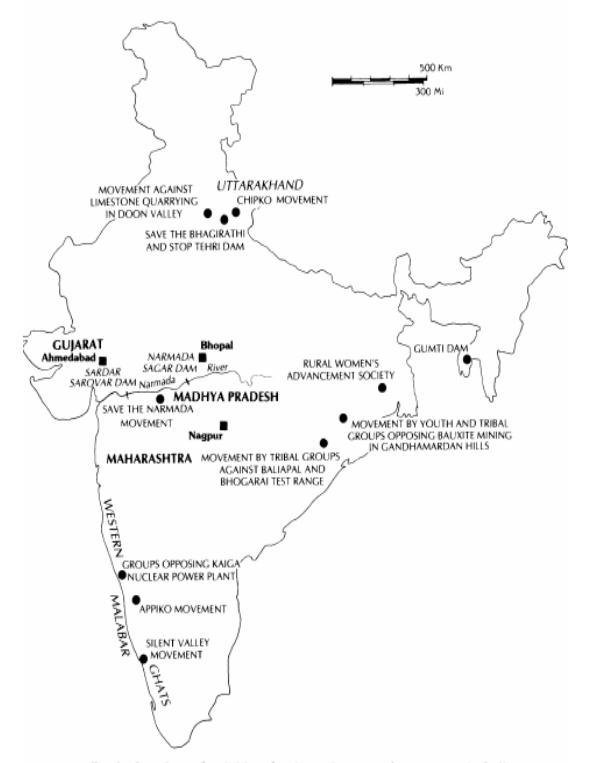| Demand of the question Introduction. Contextual introduction. Body. Discuss the nature and scope of environmental movements in independent India. Discuss their significance and limited success. Conclusion. Way forward. |
The environmental movements are social movements that involve local people and organizations for the conservation of the environment and for the improvement of the state policy especially inclined towards the environment. In India, the history of environmental movements is quite old. Movements like Chipko Andolan, Narmada Bachao Andola have played an important role since independence.
Nature and scope of environmental movements in independent India:
- Mass movement: In India the environmental movements go beyond the social and cultural differences. It unite people belonging to different caste, ethnicity, political ideologies, gender and age groups working for the common goal of environment protection.
- Women as the leader: In these movements, women especially of weaker sections took the lead, both as leader and the participants. For instance, Gaura Devi and Bachni Devi of the Chipko movement, Amrita Devi of the Bishnoi movement, Medha Patkar of the Narmada Bachao Movement were some important leaders.
- Gandhian influence: It was commonly observed that in all the movements the people adopted the Gandhian concept of non-violence and Satyagraha.
- Involvement of NGOs: The most significant feature of environmental movements in India is involvement of Non-Governmental Organizations (NGOs) in these movements. Many examples can be cited. In case of the famous Chipko movement, the work of Dasholi Gram Swarajya Mandal (DGSM) was significant.
- Not environmental movements exclusively: These movements deal not exclusively with the various environmental issues alone, but also with contemporary socio-economic issues associated with the environment.
Significance of environmental movements in independent India:
- Creating awareness: These movements played a pivotal role in creating public awareness about the importance of bringing about a balance between environment and development.
- Participatory development: These movements helped in organizing model projects that show the way forward towards non-bureaucratic and participative, community-based natural resource management systems.
- Fight for local rights: These movements are important for tribal rights, especially the right of access to forest resources.
- Livelihood: Forest resources are a source of livelihood for local communities. Environmental movements are important to safeguard their livelihoods and prevent non-commercial use of natural resources.
- Ecological health: These movements are important for prevention of land degradation and cultural displacement, Eco-restoration that constitute the core themes.
Limited success: Of the people’s movements listed above, few have succeeded in achieving success. Many environmental movements in India failed for the following reasons:
- Weak local government: Local self-governments having weak decision-making power over their environments. Thus, they failed to support local environment movements.
- Lack of information: Environmental movements often fail because they lack sufficient technical information and data about the impacts of environmental stressors and therefore do not know what kind of demands to make.
- Lack of coordination: There is little dialogue and no cooperation between the various types of environmental movements, let alone between environmental movements and other pro-people movements. Consequently, environmental battles have little support from the general public.
- Weak law support: One of the biggest weaknesses to the environmental movement is lack of support through environmental law which provides for no public participation in environmental management.
Numerous grass root environmental movements were started against the developmental activities that have endangered the ecological balance. These local campaigns have always garnered local mobilizations for the common issues of environment, economic justice etc. and helped in preventing major environmental disasters.






